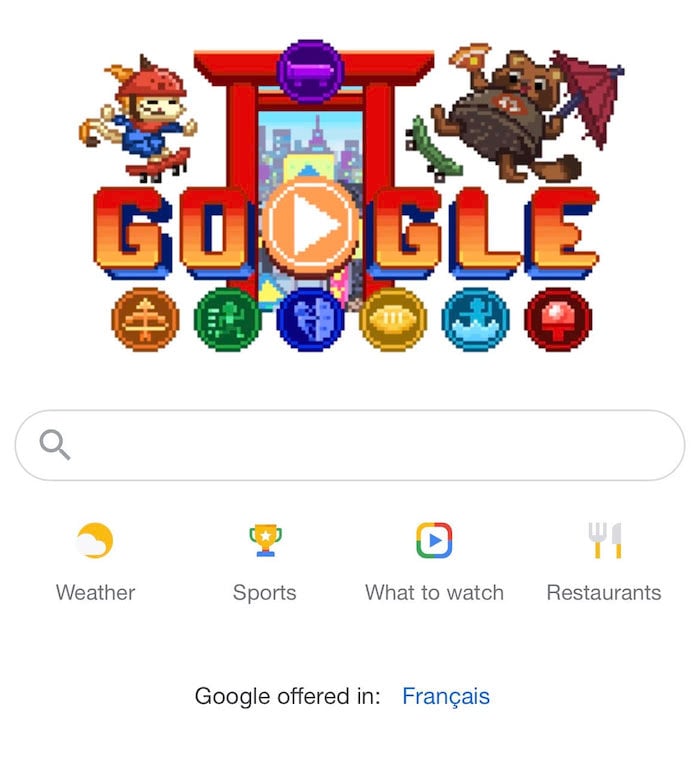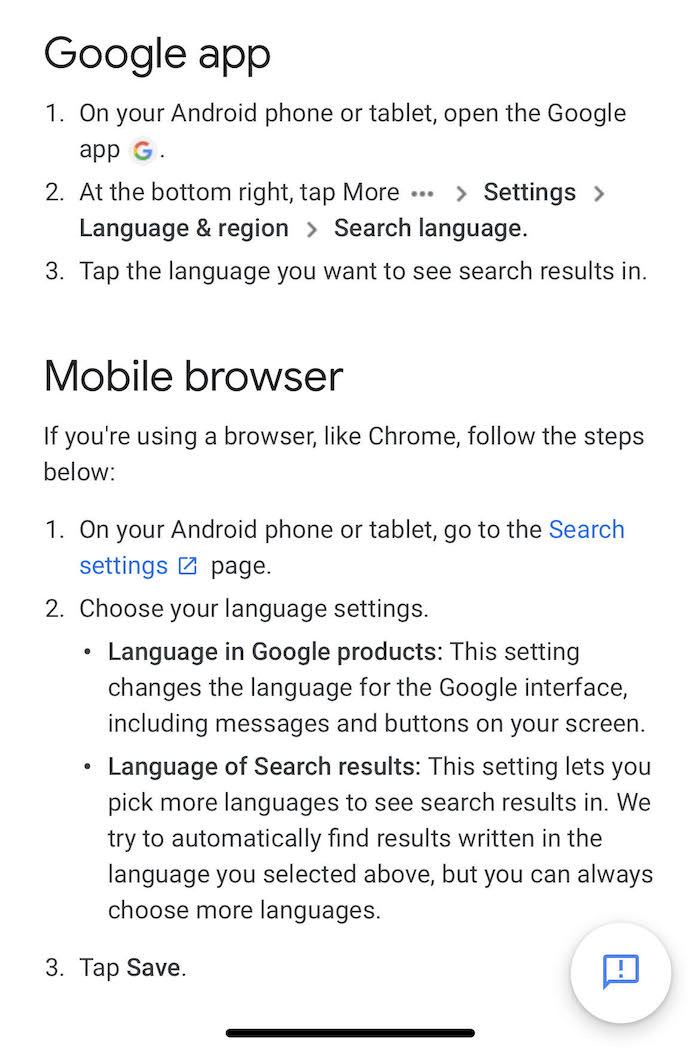
Content, content, content.
At times, it seems it’s all marketers think about. Even so, you may eventually find yourself in a content desert, desperately searching for a well of fresh content ideas.
You’ve exhausted every Google search, every whiteboard brainstorm.
However, there’s one strategy you may not have thought of.
Have you explored industry blogs in other languages with Google Translate? If not, it’s time to go international.
In this post, we break down the why and how of using Google Translate to generate content ideas.

4 Ways to Use Google Translate for Content Ideas
Google translate is an incredible resource, so it’s no wonder that in addition to having over 100 languages, we can look to the translating superpower for content ideas.
Below, we unpack the four best ways to generate new content ideas.
1. Check Out Top Blogs Around the World
Looking to broaden your content horizons? Start by broadening your search horizons. If you’ve exhausted industry content ideas in your native language, look beyond your linguistic borders to other voices in the industry.
By enabling Google Translate to translate websites, you can explore far beyond any language barriers that may exist and find troves of content to inspire you to create your own, similar asset in your language.
To begin searching for content in other languages, you must first select a different language through Chrome settings, either through the app or through your browser.

Now begin searching within your new language settings. When you encounter a page you want to be translated, simply:
- Open Google Chrome
- Navigate to the page you would like translated
- Click “Translate” at the top of page
Et voilà! You have a fully translated page that you can borrow inspiration from for your next blog post, white paper, infographic, or graphic.
2. Explore Social Media Brand Accounts for Different Countries
Don’t stop your inspiration search at mere Googling: head to social accounts to find brands from different companies.
Let’s take Twitter, for example. You can change the language settings for your app through the browser views by visiting Settings.
After you’ve changed to the language you’d like to search, explore what top brands in the space are sharing and saying. For example, we changed our language to French and searched #digitalmarketing to see what was trending conversationally.
From there, we dug into French digital marketing corporations, exploring their social presence, websites, and blogs, all in search of content inspiration.
While we uncovered a number of topics and enviable content, we were particularly taken with this social post that shared stock images to use with a current, global event.

3. Find Globally Trending Topics
If we stay in the Twittersphere, trending topics tend to be in your country, if not in your locale. To enable all globally trending topics from your browser, simply:
- Select #Explore from the left-hand column of your homepage
- From there, click the gear icon in the top right of the screen
- The location window will open, displaying a box ticked that reads “Show content in this location”
- Untick the box, displaying more options
- Select the Explore option button to find all the locations where Twitter is available
- Select your desired locations to see the trending topics
By exploring topics outside of your own worldview, you can find new areas of discussion and new niches in need of filling. These hashtags can allow you to tailor your content to the larger conversation.
4. Dig Into Your Industry Internationally
While we’ve covered exploring by hashtag, you can also discover inspiring content through finding the top influencers or companies in your specific sphere.
A lot of aggregation sites provide a ranking for industry leaders in other countries. When we searched for the best digital marketing agencies in Germany, we pared down a list of 20 to a list of 10.
From there, we navigated to their websites and explored their blogs.
By exploring what other digital marketers are creating globally, we can tap into trends larger than those before us, borrow content ideas and find inspiration across borders.
5 Tips for Using Google Translate to Generate Content Topics
While finding content that relates to your field is a feat in itself, you want to ensure the content you’ve found is truly relevant. Below, we break down five tips to keep in mind as you explore international content waters.
1. Be Aware of Cultural/Linguistic Nuances
While looking for inspiration and ideas across continental divides is all well and good, if you use Google Translate, be aware of cultural and linguistic nuances that can change the meaning and interpretation of text.
For example, colloquialisms hardly ever translate across linguistic divides. In these cases, if you’re borrowing heavily from existing text, you must be sure to adjust the language to reflect terminology that makes sense for your reader. Otherwise, your work will go to waste completely.
2. Be Cognizant of Being Offensive
Wading into a larger conversation always poses a risk for the unindoctrinated. If you choose to use Google Translate to enter an ongoing discussion about an industry topic, be sure you’ve educated yourself on the nuances and realities of said topic. Regardless of intent, there is always the possibility your entrance into the conversation may not be as productive as you had hoped.
In terms of borrowing from existing content, read the translation with an eye toward how it will be perceived by your future audience, reworking and removing anything that may not come across as intended.
3. Discover Content in Industry-Adjacent Niches
Perhaps you’ve gone through all of the search exercises noted above and still came up empty-handed. To look even deeper into your topic, explore industry-adjacent niches that can help drive even more content ideas.
Let’s stay with our digital marketing example. Rather than casting a net that wide, we can delve into email marketing, and from email marketing into email metrics, and from email metrics into strongest email calls to action (CTA).
By moving beyond the overarching umbrella of your industry, you can find more granular content that speaks to your market, providing you inspiration and guidance along the way.
4. Explore Content All Around the World
With 109 languages and counting, there’s no limit to content you can explore with Google Translate. As you get accustomed to delving into different languages, go beyond your usual searches and seek out different points of view from different individuals.
With each search, you can find more and more content inspiration and involve yourself in the global, ongoing conversation about the largest trends, topics, and issues impacting your field.
5. Keep SEO in Mind
As a marketer, you’re well aware of the importance of search engine optimization (SEO) on your content, regardless of format. When you use Google Translate to translate a content piece, you will have to reoptimize the piece for SEO to ensure that it meets your standards and drives searchability.
Be sure to include your respective keywords and adjust content as needed to reflect your goals throughout any piece that goes through Google Translate.
Frequently Asked Questions About Google Translate
Is translated content considered duplicate content?
In short, no. Translated content is not duplicate content. With different words and phrases, nuances and colloquialisms, translated content is entirely different from its origin. To learn more about this, watch this excerpt from Google’s John Mueller.
How do I get Google to automatically translate a page?
To get Google translate to translate for you, simply follow these three steps:
1. Open Google Chrome
2. Navigate to the page you would like translated
3. Click “Translate” at the top of page
How can Google Translate help me find content ideas?
By harnessing Google’s translation powers, you can find inspiring content from all over the world to recreate for your own brand. What’s more, you can join a larger conversation that is ongoing globally, widening your audience reach even further and establishing you as an international thought leader.
Is Google Translate accurate?
For everyday use, Google Translate is pretty accurate. For the specific use of searching for content inspiration, Google Translate is very accurate. With that said, be sure to read for linguistic nuance and appropriateness before sharing or replicating in total.
Google Translate Conclusion
As the demand for quality content continues to rise in every industry, it is vital marketers identify new sources to inspire and replicate content that hasn’t been duplicated by every brand in your industry.
By looking beyond the traditional bounds of your content-sphere, you can tap into conversations and ideas that can inspire similar content creation, while simultaneously inviting you into a global conversation about your industry.
As you explore more and more languages, be sure to keep nuance and perception in mind. Don’t forget to continuously optimize any borrowed content for SEO so your version of the content can rank as high as possible.
What’s the best place you’ve found content inspiration?
from Neil Patel https://ift.tt/37nx0LV